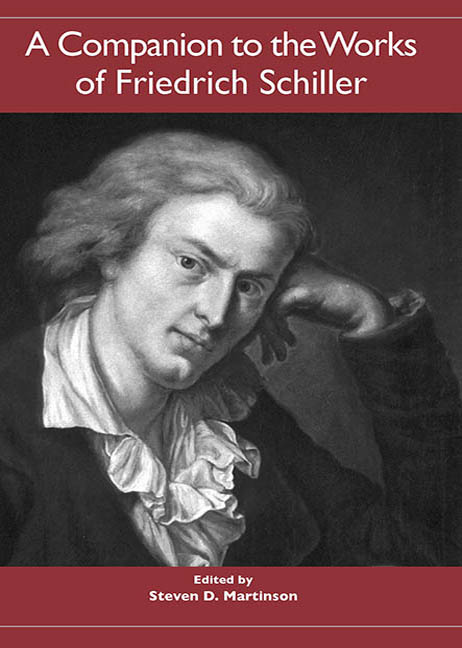Book contents
- Frontmatter
- Dedication
- Contents
- Acknowledgments
- The Works of Friedrich Schiller
- Editions and Abbreviations
- Introduction: Schiller and the New Century
- Intellectual-Historical Settings
- Major Writings
- Schiller's Legacy
- The Reception of Schiller in the Twentieth Century
- Works Cited
- Notes on the Contributors
- Index
The Reception of Schiller in the Twentieth Century
from Schiller's Legacy
Published online by Cambridge University Press: 28 April 2017
- Frontmatter
- Dedication
- Contents
- Acknowledgments
- The Works of Friedrich Schiller
- Editions and Abbreviations
- Introduction: Schiller and the New Century
- Intellectual-Historical Settings
- Major Writings
- Schiller's Legacy
- The Reception of Schiller in the Twentieth Century
- Works Cited
- Notes on the Contributors
- Index
Summary
Schiller, Nationaldichter
During the nineteenth century, Schiller's work and the memory of the man and writer took on increasing significance for the German nation. He became one of the leading symbols of the German Kulturnation, and his statues were monuments of and for the Germans and Germany — everywhere, not least in the United States. This veneration became most pronounced in 1848 and led to the exuberant festivities of 1859 — the one-hundredth anniversary of his birth — when Schiller was celebrated as the herald of the forthcoming German nation and definitively established as a national icon.
In its function as Bildungstheater and as representation of the national ideal, the German theater put Schiller's plays in first place. However, the concept of history in Schiller's plays and the style of their performances also led to his identification with norms of classicism and artificiality. As a result, modernizing trends that strove for a more realistic drama took aim at Schiller as a major obstacle. Georg Büchner is the forerunner of this opposition, followed by the naturalists, primarily Gerhart Hauptmann, and, in the early twentieth century, Bertolt Brecht. This meant that Schiller was admired and used politically for festive occasions, but criticized and opposed by successive young generations who, nevertheless, found much to their liking in Schiller's rebellious early plays. As the object of academic scholarship he was valued as one of the German Classics, yet through his primary medium, the theater, his texts remained vigorous in the non-academic sphere. His plays and poems served as texts in German schools. As a result, numerous quotations from Schiller's works, including parodies, entered the daily language.
After German cultural and political unity had been achieved, Schiller retained the aura of herald of the German nation — despite the scarcity of textual references to German history in his works. His protagonists, like Wilhelm Tell and Jeanne d'Arc, fight and die for their nation, but it is never the German nation. It takes a tour de force to make Schiller's Wallenstein into a champion for German unity.
It is remarkable, though, that through much of the twentieth century, the image of Schiller the writer remained intact for national celebrations, and in all of the changing political systems and contexts. Schiller commemorations punctuated the century, beginning in 1905, the centenary of Schiller's death.
- Type
- Chapter
- Information
- A Companion to the Works of Friedrich Schiller , pp. 271 - 296Publisher: Boydell & BrewerPrint publication year: 2005

